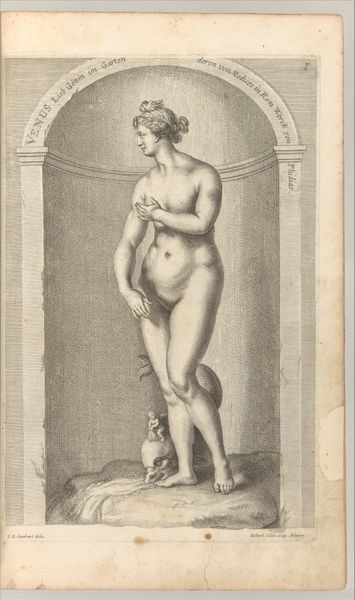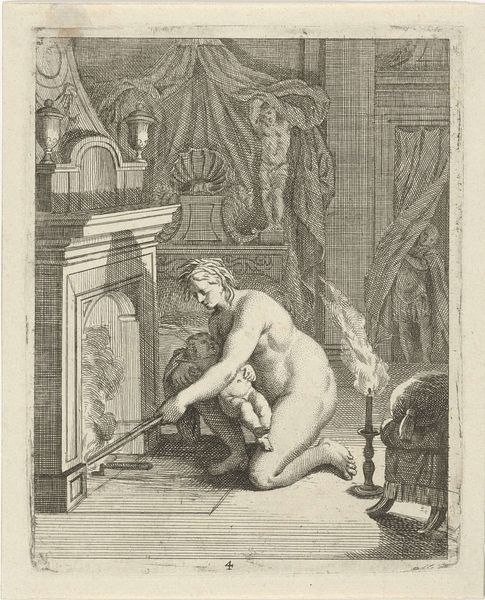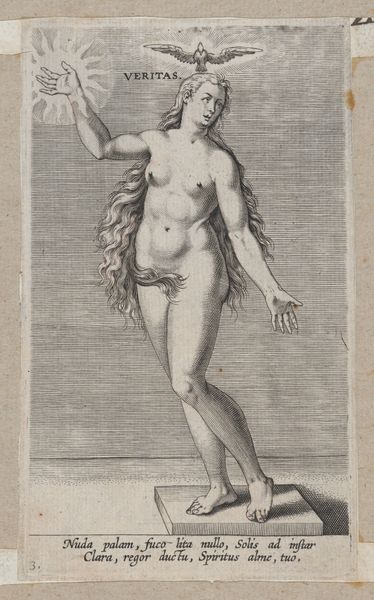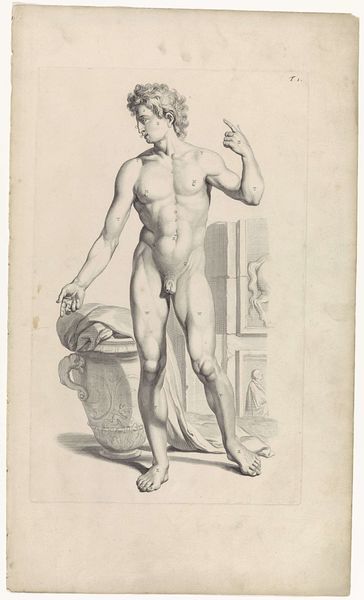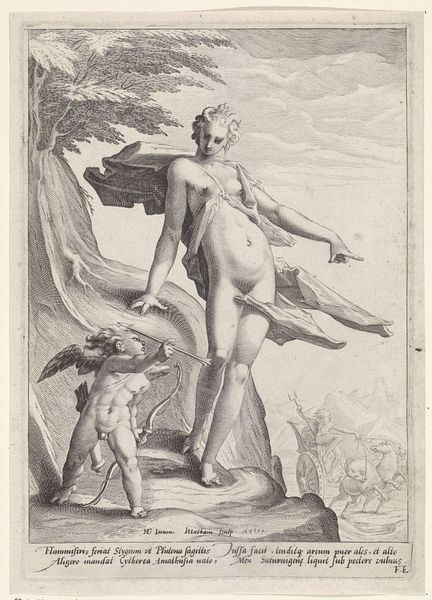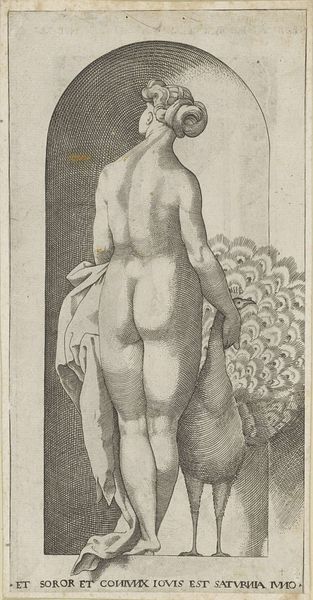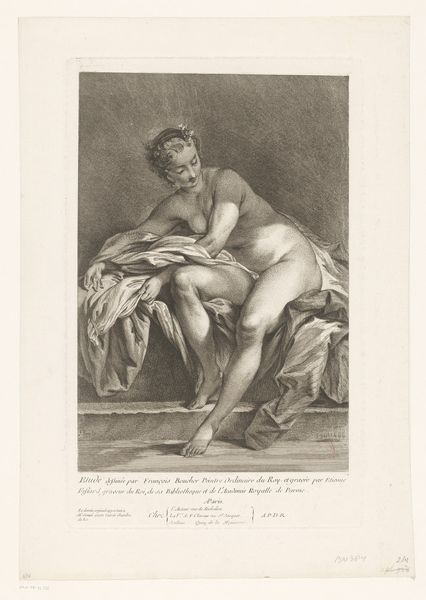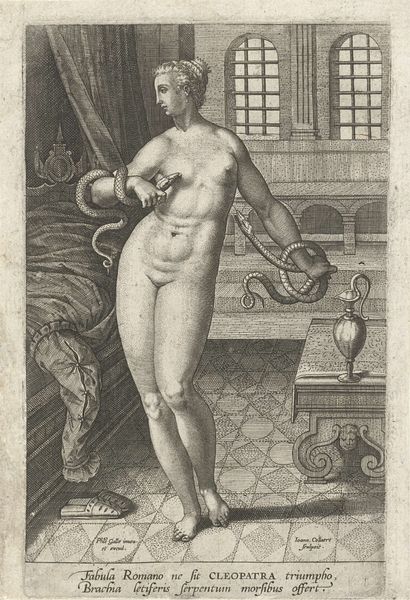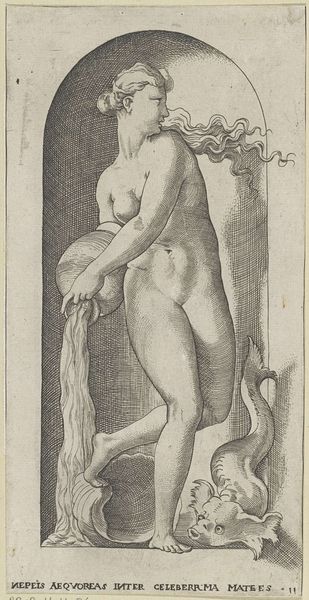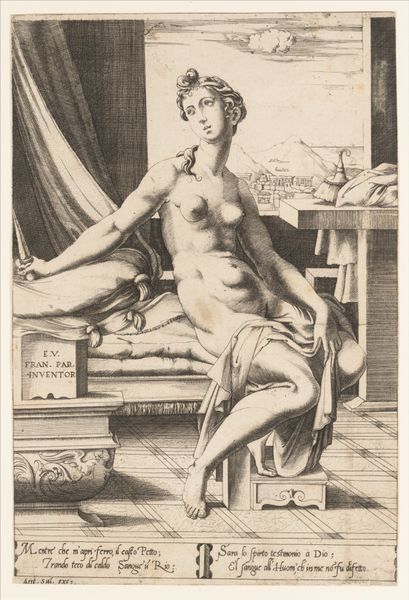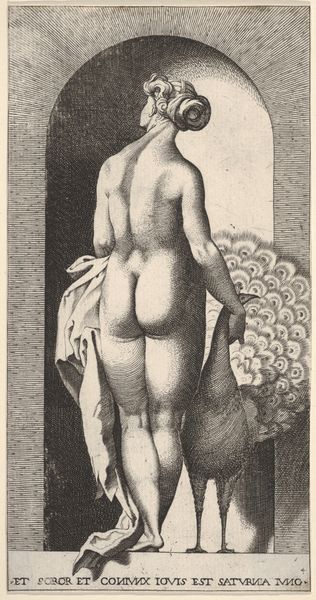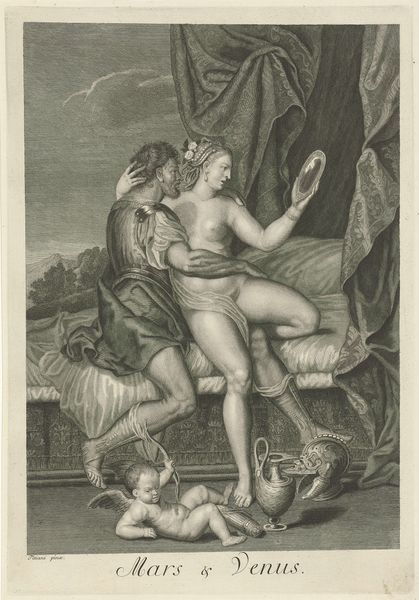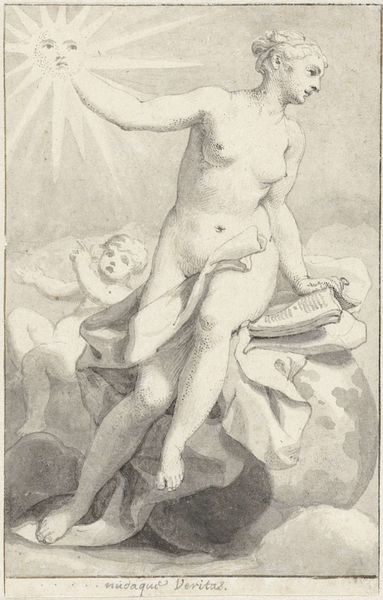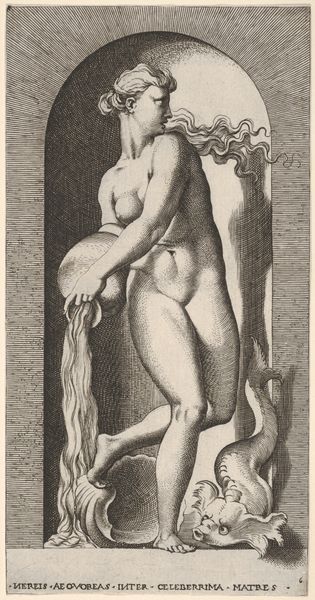
print, engraving
#
pencil drawn
#
baroque
# print
#
pencil sketch
#
classical-realism
#
charcoal drawing
#
figuration
#
pencil drawing
#
ancient-mediterranean
#
portrait drawing
#
history-painting
#
nude
#
engraving
Dimensions: height 321 mm, width 225 mm
Copyright: Rijks Museum: Open Domain
Editor: Here we have Pietro Campana's "Leda en de zwaan," a print from the mid-to-late 18th century. The subdued grayscale of the engraving, along with the intimate depiction of Leda embracing the swan, creates a strikingly unsettling mood. What layers of meaning do you unpack from this historical interpretation of the myth? Curator: That unsettling feeling is a great starting point. Myths, especially one like this—Leda and the Swan—are never neutral. Campana, working in a period grappling with Enlightenment ideals alongside persistent power imbalances, inherits and perpetuates a very specific narrative. What do you notice about Leda’s portrayal? Editor: Well, she’s presented as a classical nude, idealized but also vulnerable, almost passive in her embrace with the swan. Curator: Exactly. And what does that vulnerability signify within the context of the myth, and more broadly, within the social frameworks of the time? Consider how the power dynamic inherent in Zeus’s transformation and assault becomes subtly, almost elegantly, palatable through the artistic choices – the soft lines, the classical aesthetic. Does that sanitization amplify or diminish the original violation? Editor: It almost…normalizes it, I suppose? By cloaking it in beauty, it distracts from the violence of the act. It almost reframes the coercion of this union and subsequent motherhood as some act of divine destiny. Curator: Precisely. The artistic framing subtly reinforces patriarchal structures and assumptions about female agency and divine power. Remember that even artistic representation of myths reflects and shapes the values of its era. How does knowing this impact our viewing of the artwork today? Editor: It makes me realize that beauty, in art, is rarely innocent, and that we always need to critically examine the social and political messages encoded in it. Thanks, that really made me rethink how I see this piece! Curator: And that active questioning is exactly what keeps these dialogues, and the art itself, alive.
Comments
No comments
Be the first to comment and join the conversation on the ultimate creative platform.
